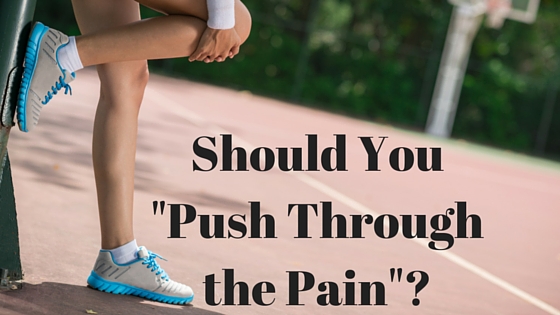
“You’re fine”. “Pain is your friend”. “Take two aspirin and call me in the morning”.
We’ve been hearing it all our lives, in different ways: push through the pain. But is that a good idea?
Pain is an indicator that something is amiss. It may indicate overuse, a substitution pattern of muscle activity or poor joint mechanics. Pain can be described as “sharp” or “stabbing”, and can be present in muscles or joints.
Despite what you may have heard, “Playing through pain” is a bad idea. It can put an athlete at risk for a more serious injury. At the very least, the longer that pain continues without care, the more challenging it often is to treat.
When should you seek treatment for pain? Pain warrants assessment if it persists more than 3-5 days after it begins, or if discomfort consistently limits the duration or intensity of activity.
If you aren’t sure, contact us at (512) 339-1500 to come in and have it checked out. It’s best not to delay. If pain is treated in its “acute” stage (within a week or so of its onset) or subacutely (within several weeks), it will likely respond readily with minimal intervention and will be less likely to require lots of down time. In Texas, you can see a physical therapist for an evaluation without a prescription. In order to receive physical therapy treatment, however, you will need a prescription, or your physician or nurse practitioner can sign off on your physical therapist’s plan for care.
We should also mention that soreness is different than pain. Soreness is a normal muscular response to being pushed past its current level of tolerance to an activity. Soreness is typically described as “achy” or “stiff”. In order to build up tolerance to muscle work – for lifting or running or jumping or any other athletic activity – it is normal to experience muscle soreness, which often comes on one to three days after activity. It is best to exercise at a level which results in only mild soreness. If you are experiencing soreness, try gentle movement or light massage, as well as with a day or two of rest from the new, challenging activity. After a few days, the body is usually fairly more tolerant of the same challenging activity – meaning that repeating exercise at the same intensity is likely to produce less soreness on the next attempt. Developing a plan for the gradual progression of exercise activity is often helpful to minimize soreness.
For more information regarding pain and soreness, check out these resources from the American Physical Therapy Association and the American College of Sports Medicine:
Soreness vs Pain: What’s the Difference?
9 Things You Should Know About Pain

